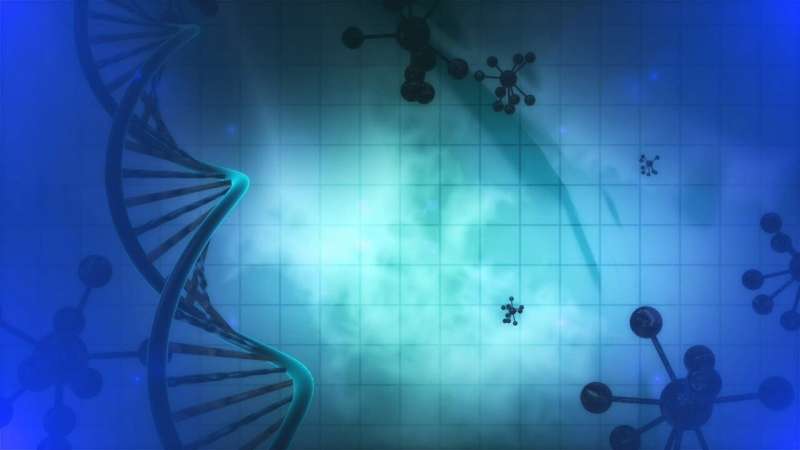Credit: CC0 Public Domain
A new study found that changes in specific genes may contribute each year to the roughly 400 sudden unexplained deaths in children (SUDC) aged one year and older—and separately from sudden infant death syndrome (SIDS).
Children younger than 1 year old who die suddenly are diagnosed with SIDS, and older children with SUDC. But the conditions likely have many factors in common, say the study authors. Although SIDS causes 3 times as many deaths as SUDC each year, it receives more than 20 times the research funding. Parents who lost a child older than age 1 have had few options to support their search for answers, and no research organization to join.
For this reason, study author Laura Gould, after losing her daughter, Maria, to SUDC at the age of 15 months in 1997, asked NYU Langone Health neurologist Orrin Devinsky, MD , to co-found the SUDC Registry and Research Collaborative (SUDCRRC). Since 2014, registry staff have worked with bereaved parents to enroll their families in the registry, which collects and analyzes genetic specimens from parents and their deceased child. Such molecular autopsies are not currently part of the standard cause-of-death investigations conducted by most medical examiner's and coroner's offices.
Published online December 20 in the Proceedings of the National Academies of Sciences, the new study is the first to identify genetic differences present in a large group of SUDC cases, most of which involved children who died between the ages of 1 and 4.
Led by researchers from the NYU Grossman School of Medicine, the study analyzed the DNA codes of 124 sets of parents, and of the child that each couple lost to SUDC. They found that nearly 9 percent—or 11 of the 124 children—had DNA code changes in genes that regulate calcium function. Calcium-based signals are important for brain cell and heart muscle function. When such signals are abnormal, they may cause arrhythmias (abnormal heart rhythms) or seizures, both of which increase the risk of sudden death.
The researchers discovered that most of these DNA changes were new. The mutations were not inherited, instead arising randomly in the children of parents who did not have that genetic change, says Gould. Thus, if SUDC occurs in one child, it is unlikely to occur again if the same couple has another child. This provides some reassurance to families who want to have another child.
"Our study is the largest of its kind to date, the first to prove that there are definite genetic causes of SUDC, and the first to fill in any portion of the risk picture," says senior study author Richard Tsien, DPhil, chair of the Department of Neuroscience and Physiology and director of the Neuroscience Institute at NYU Langone. "Along with providing comfort to parents, new findings about genetic changes involved will accumulate with time, reveal the mechanisms responsible, and serve as the basis for new treatment approaches."
First hints
"We focused on 137 genes linked by past studies to cardiac arrhythmias, epilepsy , and related conditions, because seizures and sudden cardiac death are known to be more prevalent in SUDC," says study author Dr. Devinsky, director of NYU Langone's Comprehensive Epilepsy Center. "Among the children that died, we found a tenfold greater frequency of genetic changes in these genes than in the general population."
In a partial explanation for these trends, the study's statistical analysis found that the genetic changes present in the children with SUDC occurred in clusters with similar functions, most controlling calcium channels in brain and heart muscle cells. After receiving the right signal, a cell opens the channels, enabling calcium ions to rush across membranes to create an electric current. In neurons this current triggers signals along nerve pathways, and in heart muscle cells, contractions as the heart beats.
Mutations found in the current study are known to slow calcium channel inactivation, prolong the current running through them, and potentially lead to abnormal heart rhythms that can cause the heart to stop, say the study authors. The two genes with de novo mutations in calcium processing found in more than one child in the study were RYR2 and CACNA1C, both of which are known to be linked to a cardiac arrhythmia. Other genes mutated in the SUDC group have been linked to seizures.
In addition, more than 91 percent of the children died while asleep or resting, including 50 percent of those with de novo mutations affecting genes involved with calcium physiology in the heart and brain—CACNA1C, RYR2, CALM1, and TNNI3. Moving forward, the team plans larger studies to look at the role of neurohumoral status (sleep vs. waking, rest vs. exercise), identify more mutations that may be harmful in SUDC, and determine if the calcium channel flaws cause more dire problems in brain cells or heart muscle.
More information: De novo mutations in childhood cases of sudden unexplained death that disrupt intracellular Ca regulation, Proceedings of the National Academy of Sciences (2021). DOI: 10.1073/pnas.2115140118.
Journal information: Proceedings of the National Academy of Sciences
Provided by NYU Langone Health























